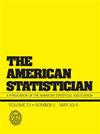调查表格:卡方检验与软件分析分类调查数据的比较
IF 2.1
4区 数学
Q1 STATISTICS & PROBABILITY
引用次数: 0
摘要
卡方检验通常用于检验分类变量之间的关联、两个或多个样本之间比例的均匀性以及特定分布的拟合优度。为了解释调查数据的复杂设计,卡方检验的变体以及实现这些检验的软件包已经开发出来。然而,从调查从业者的角度来看,缺乏应用文献来审查和比较调查卡方检验的备选方案及其相关的编程和输出。本文旨在填补这一空白。许多用于调查分析的现代统计软件包都能够计算Wald卡方检验或Rao-Scott卡方检验,以及其他类型的卡方检验,包括Rao-Scott似然比卡方检验和Wald对数线性卡方检验。本文重点介绍了这四种类型的卡方检验,并检查了在SAS®,R, Python和SUDAAN®中计算它们的四个统计包。虽然使用不同包的同一类型的检验产生相似的结果,但在进行相同的比较时,不同类型的卡方检验可能产生p值的变化。示例编程代码包含在附录中,供读者参考。本文章由计算机程序翻译,如有差异,请以英文原文为准。
Much Ado About Survey Tables: A Comparison of Chi-Square Tests and Software to Analyze Categorical Survey Data
Chi-square tests are often employed to examine the association of categorical variables, the homogeneity of proportions between two or more samples, and the goodness-of-fit for a specified distribution. To account for the complex design of survey data, variants of chi-square tests as well as software packages that implement these tests have been developed. Nevertheless, from a survey practitioner’s perspective, there is a lack of applied literature that reviews and compares alternative options of survey chi-square tests and their associated programming and output. This paper aims to fill such a gap.Many modern statistical software packages for survey analysis are capable of computing either the Wald chi-square test or the Rao-Scott chi-square test, along with other types of chi-square tests, including the Rao-Scott likelihood ratio chi-square test and the Wald log-linear chi-square test. This paper focuses on these four types of chi-square tests, and examines four statistical packages that compute them in SAS®, R, Python and SUDAAN®. While the same type of tests using different packages yield similar results, different types of chi-square tests may yield variations in p-values when conducting the same comparison. Sample programming code is included in Appendix for readers’ reference.
求助全文
通过发布文献求助,成功后即可免费获取论文全文。
去求助
来源期刊

American Statistician
数学-统计学与概率论
CiteScore
3.50
自引率
5.60%
发文量
64
审稿时长
>12 weeks
期刊介绍:
Are you looking for general-interest articles about current national and international statistical problems and programs; interesting and fun articles of a general nature about statistics and its applications; or the teaching of statistics? Then you are looking for The American Statistician (TAS), published quarterly by the American Statistical Association. TAS contains timely articles organized into the following sections: Statistical Practice, General, Teacher''s Corner, History Corner, Interdisciplinary, Statistical Computing and Graphics, Reviews of Books and Teaching Materials, and Letters to the Editor.
 求助内容:
求助内容: 应助结果提醒方式:
应助结果提醒方式:


